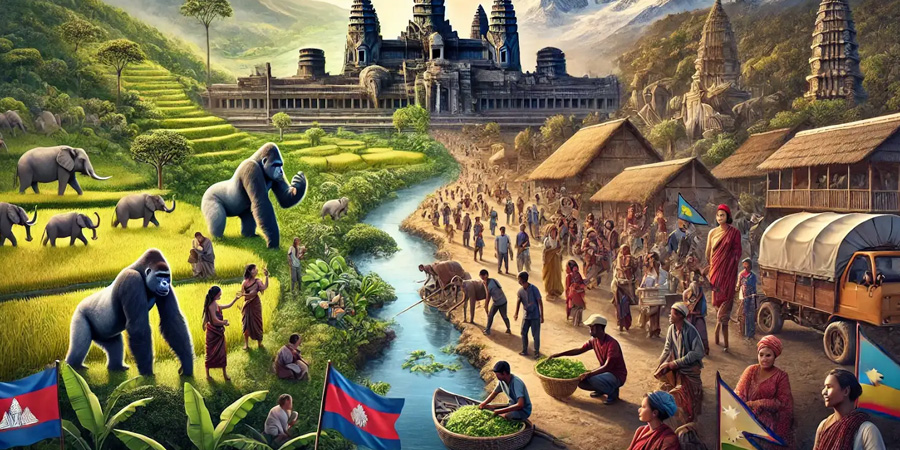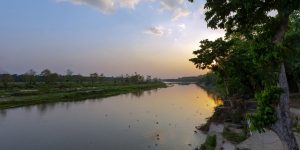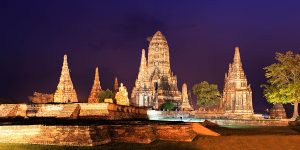I have been visiting Rwanda for work on an annual basis, and we recently ventured into Cambodia as well. Having visited and worked in both these countries, I started noticing various commonalities of these countries with Nepal. While Nepal went through the Maoist insurgency; which revolutionized political ideology of masses, Rwanda suffered through mass genocide and killings, and Cambodia underwent American bombings & Khmer rouge brutality; which tried to enforce a utopian ideology of communism in these countries. These events led to huge economic losses, thousands of death, and often starvation which instilled a sense of fear in all three countries. What is interesting, however, is the development that Rwanda and Cambodia have experienced post the end of such regimes vis-à-vis Nepal.
RWANDA AND CAMBODIA: PRESENT
After two decades of civil war, Rwanda has progressed enough to achieve an annual growth rate averaging at 7%. It is now one of the fastest growing economies in the East African continent. Similarly, Cambodia, which was one of the poorest economies, underwent a complete turnaround and now ranks significantly better than Nepal in several key economic factors like exports, per capita GDP and unemployment rates.
AGRICULTURAL ECONOMIES DEPENDENT ON FOREIGN AID
All three countries are largely agriculture based economies; slowly moving on to become service oriented economies currently dependent on foreign aid; with almost 30-40% of national budgets backed by aid. Rwanda and Cambodia have used political goodwill to invest and support resources in sectors with the highest potential (agriculture, hydropower, tourism and manufacturing); thereby attracting huge foreign investments in these sectors. On an average, Rwanda doubles its power generation every 4-5 years, meanwhile Cambodia is self-sufficient and self-reliant on this front. Nepal on the other hand while glorifying its mountains and river resources and hydropower potential, has traded multiple licenses over the years with little addition to the national grid every year.
While Nepal does not shy away from support and collaboration to achieve the desired results, sadly it hesitates to capitalize on these resources and fast-track the development process when the time is ripe. Nepal could have seen better results much earlier had it realized the value of foreign aid and investments. However focus remains on inter/intra party politics and righteousness thereby leaving the wheels of the economy dependent on remittance.
PRIVATE SECTOR OPERATIONS
It is also interesting to see commonalities in the functioning of the economy of these three countries. For instance, businesses have a similar style of operation with one business community dominating market operations in a certain sector. Similar to the Marwaris in Nepal, Rwanda has Kenyans and Cambodia has the Vietnamese. Business transactions and trade is largely governed by these groups with little room for local infiltration.
TOURISM A MAINSTAY
Like the majestic Himalayas anchor Nepal’s tourism; Rwanda and Cambodia have their anchors too – high end Gorilla tourism in landlocked Rwanda and the culturally and intricately beautiful city of Angkor in Cambodia draw several thousands of tourists every year. However, the difference lies in the fact that Rwanda has focused on product innovation and enhanced the quality of services to attract tourists, meanwhile Cambodia with the help of the development community has preserved its rich heritage.
Nepal has an edge over these two countries as English is widely spoken and understood in the country. Meanwhile, it is extremely difficult to get around without the help of an interpreter and local guide in Rwanda and Cambodia. Despite this, language is not much of a concern in these countries as they have focused beyond language for the tourism sector to thrive in the years to come.
STRONG DIASPORA COMMUNITIES
While remittance from Nepal’s diaspora community is considered to be a strong pillar of the economy, its contribution has been dwindling (affected by the global crude oil business and labor laws) and its utilization in productive sectors remains a dialogue and topic of discussion. In comparison, the returnee diaspora in Rwanda and Cambodia are extremely productive and utilize the experience and resources they come back with.
In having stated all the commonalities, it is proof that economies marred with civil war and unrest can come around and grow into stronger economies, but it takes a leader with a vision for the country to experience this. The eagerness and willpower to convert a vision into an actionable plan and sincerely pursuing execution can bring about economic and development turnarounds as proven by the continued economic growth achieved in Rwanda and Cambodia.







